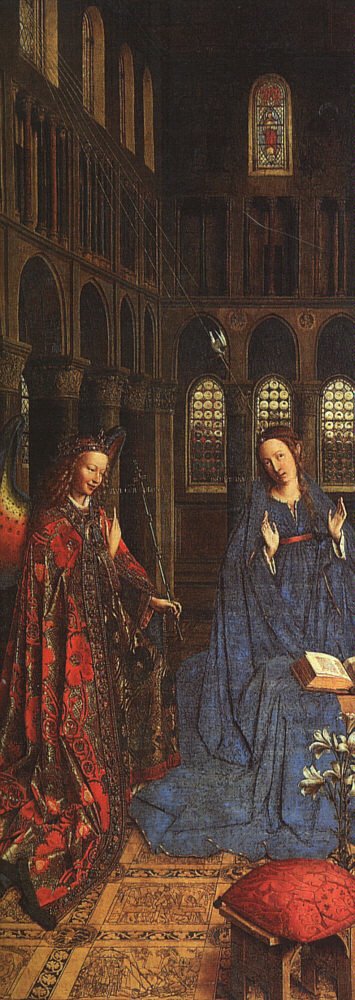

The Annunciation
The Annunciation described by Saint Luke is interpreted in terms of actuality in this painting, thought to have been the left wing of a triptych. The forms, including that of the archangel, seem to have weight and volume. The use of light and shadow in a natural way hints at Van Eyck’s amazing skill. He has managed to distinguish between the textures of materials ranging from hard, polished stone to the soft, fragile petals of flowers.
Religious symbolism speaks from every detail of the painting, expounding the significance of the Annunciation, and the relationship of the Old Testament to the New. Even the structure of the church can be interpreted symbolically; the dark upper storey and single stained glass window of Jehovah possibly referring to the former era of the Old Testament, while the lower section of the building, already illuminated by the "Light of the World" and dominated by transparent triple windows symbolizing the Trinity possibly signifies the New Testament. The concept of transition from old to new is further seen in the change from the Romanesque round-arched windows of the upper storey to the early Gothic pointed arches of the lower area, and also in the depictions on the floor tiles. These depictions include images of David beheading Goliath, and Samson destroying the Philistine temple, both of which are Old Testament events depicting the Salvation of the Jewish people, which prefigure the salvation of humankind through the coming of Christ.